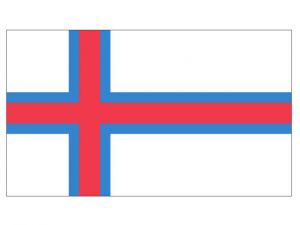Language/Faroese/Grammar/Comparatives
Comparatives are a form of adjectives used to compare the characteristics of two or more things. In this lesson, we will learn how to form comparative adjectives in Faroese and how to use them in sentences, including comparisons with more, less, and as..as constructions.
Forming Comparatives
To form comparative adjectives in Faroese, you need to add the suffix "-ari" to the adjective. Here are some examples:
| Faroese | English Translation | Comparative |
|---|---|---|
| hás | tall | hægri / higher |
| lítur | small | minni / smaller |
| sterkur | strong | sterkari / stronger |
As you can see from the examples, the suffix "-ari" is added to the end of the adjective to form the comparative. Note that some adjectives may undergo changes in spelling when the suffix is added. For example, hás changes to hægri.
It is also possible to form the comparative by using the word "meira" (more) or "minni" (less) in combination with the adjective. Here are some examples:
| Faroese | English Translation | Comparative |
|---|---|---|
| vitur | wise | meira vitur / wiser |
| dyr | expensive | minni dýr / less expensive |
| gamalur | old | meira gamal / older |
In some cases, adjectives with irregular forms are used to form comparatives. For example:
| Faroese | English Translation | Comparative |
|---|---|---|
| góður | good | betri / better |
| illur | bad | verri / worse |
Using Comparatives
Comparatives are used to compare two or more things. Here are some examples:
- Hann er hægari enn eg. (He is taller than me.)
- Tátturin var meira spennandi enn bókin. (The show was more exciting than the book.)
- Hon er minni dyr enn teirra. (She is less expensive than them.)
- Ástin er betri enn hatið. (Love is better than hate.)
Comparatives can also be used in "as...as" constructions, which are used to compare two or more things that are equal in degree. Here are some examples:
- Hann er júst so hás sum tú. (He is just as tall as you.)
- Hon er júst so vakur sum eg. (She is just as beautiful as me.)
- Teir eru júst so gamlir sum eg. (They are just as old as me.)
In such constructions, the word "so" is used to mean "as", and the adjective is used in the normal form.
Exceptions to the Rules
Like many other languages, Faroese has some exceptions to the rules for forming comparatives. Some adjectives have irregular forms, while others have no comparative form at all. It is important to memorize these exceptions. Here are some examples:
| Faroese | English Translation | Comparative |
|---|---|---|
| lítil | small | minni / smaller |
| nógvur | many | fleiri / more |
| góður | good | betri / better |
| illur | bad | verri / worse |
| áhugavert | interesting | áhugaverri / more interesting |
| dagligur | daily | dagliga / more frequent |
As you can see from the examples, some adjectives have the same forms for both the positive and comparative forms. For example, the word "lítur" (small) has the same form for the positive and comparative forms, and the word "nógvur" (many) forms the comparative with "fleiri" instead of adding the "-ari" suffix.
Vocabulary
- hás - tall
- lítur - small
- sterkur - strong
- meira - more
- minni - less
- vitur - wise
- dýr - expensive
- gamalur - old
- góður - good
- illur - bad
- betri - better
- verri - worse
- áhugavert - interesting
- dagligur - daily
Exercises
1. Form the comparative of the following adjectives:
- høgur (high)
- nøgdur (enough)
- bráður (fast)
- friður (peaceful)
2. Fill in the blanks with the correct comparative form:
- Hann er _______ enn tú. (He is taller than you.)
- Hann fer _______ enn teir. (He runs faster than them.)
- Hon kemur _______ tórsdagin. (She comes more frequently on Thursdays.)
3. Translate the following sentences into Faroese:
- She is less beautiful than her sister.
- The book is more interesting than the movie.
- The car is older than me.
Summary
In this lesson, we learned how to form comparative adjectives in Faroese using the suffix "-ari" or the words "meira" and "minni". We also learned how to use comparatives in sentences to compare two or more things, as well as in "as...as" constructions. We also learned some exceptions to the rule and expanded our vocabulary with new adjectives. Practice using comparatives in your daily conversations to reinforce your understanding.

